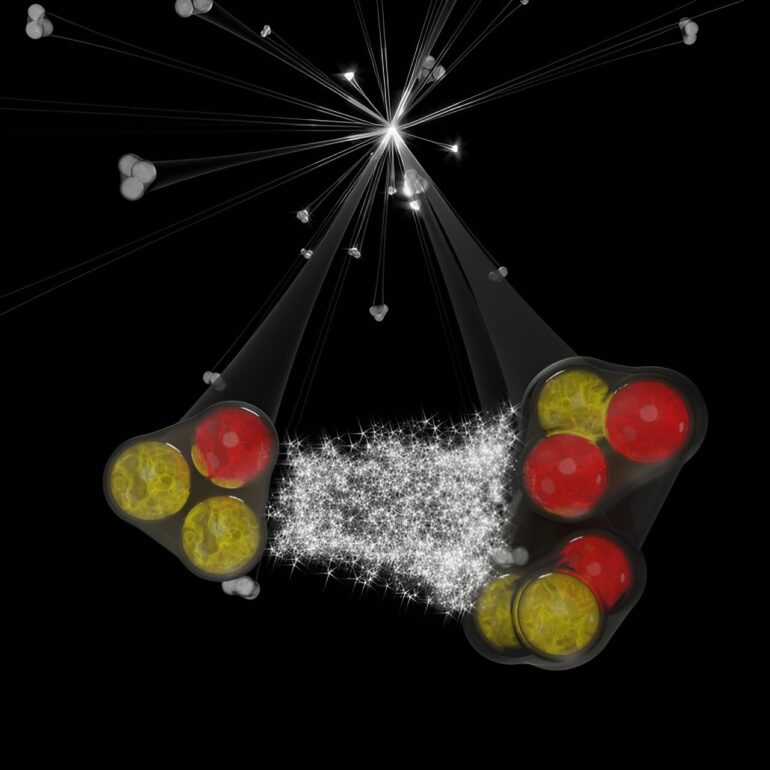In an article recently published in Physical Review X, the ALICE collaboration presented its studies of correlations in the kaon–deuteron and proton–deuteron systems, opening the door to precise studies of the forces in three-body nuclear systems.
A fundamental force is typically described as an interaction between two objects. Extending this to more complicated systems is not always trivial. The description of strongly interacting three-hadron systems is key to understanding many phenomena in modern nuclear physics, such as the structure of nuclei, properties of high-density nuclear matter and the composition of neutron star cores.
Proton–proton collisions at the LHC produce a large number of particles that are emitted very close to each other, at distances of about 10-15 m (a femtometer). It is interesting to explore whether they influence each other in any way before spraying off in all directions.
If two particles are produced close to each other and with similar momenta and direction, the pair can be subject to quantum statistics, Coulomb force and strong interaction. If one of the pair is a deuteron, then a system with a deuteron and another hadron, like a proton or a kaon, is effectively a three-body system. Thus, the measurement of correlations between deuterons and kaons or protons is expected to reveal the interactions of three-body systems.
The ALICE collaboration utilizes its excellent particle identification capabilities to study these correlations in high-multiplicity proton–proton collisions at a center-of-mass energy of 13 TeV. The result is a correlation function that measures how the probability of finding two particles with certain relative momenta differs from what would be expected if their momenta were completely independent or uncorrelated.
In the absence of correlation, the value of the function is unity. A value above one indicates attractive interaction, whereas a value below one indicates repulsive interaction.
The correlation functions for both the kaon–deuteron and proton–deuteron systems are below unity for low relative transverse momenta, indicating an overall repulsive interaction. The analysis of the kaon–deuteron correlation shows that the relative distances at which deuterons and protons or kaons are produced are quite small, around 2 fm.
The kaon–deuteron correlations are well described with an effective two-body model that incorporates both the Coulomb interaction and strong interaction between the kaon and the deuteron. In contrast, the same effective two-body approach fails to describe the proton–deuteron correlations, necessitating a full three-body calculation that accounts for the structure of the deuteron.
An excellent data description is achieved using theoretical calculations that account for both two- and three-body strong interactions. This demonstrates the sensitivity of the correlation function to the short-range dynamics of the three-nucleon system.
The correlation measurements at short distances constitute an innovative method to study three-body systems at the LHC, with the potential to extend such studies to other hadrons. It is envisaged to apply a similar approach to data from LHC Runs 3 and 4 to investigate three-baryon systems in the strange and charm sectors, which are otherwise experimentally inaccessible.
More information:
S. Acharya et al, Exploring the Strong Interaction of Three-Body Systems at the LHC, Physical Review X (2024). DOI: 10.1103/PhysRevX.14.031051
Citation:
ALICE probes the strong interaction three-body problem with new measurements of hadron–deuteron correlations (2024, September 25)



